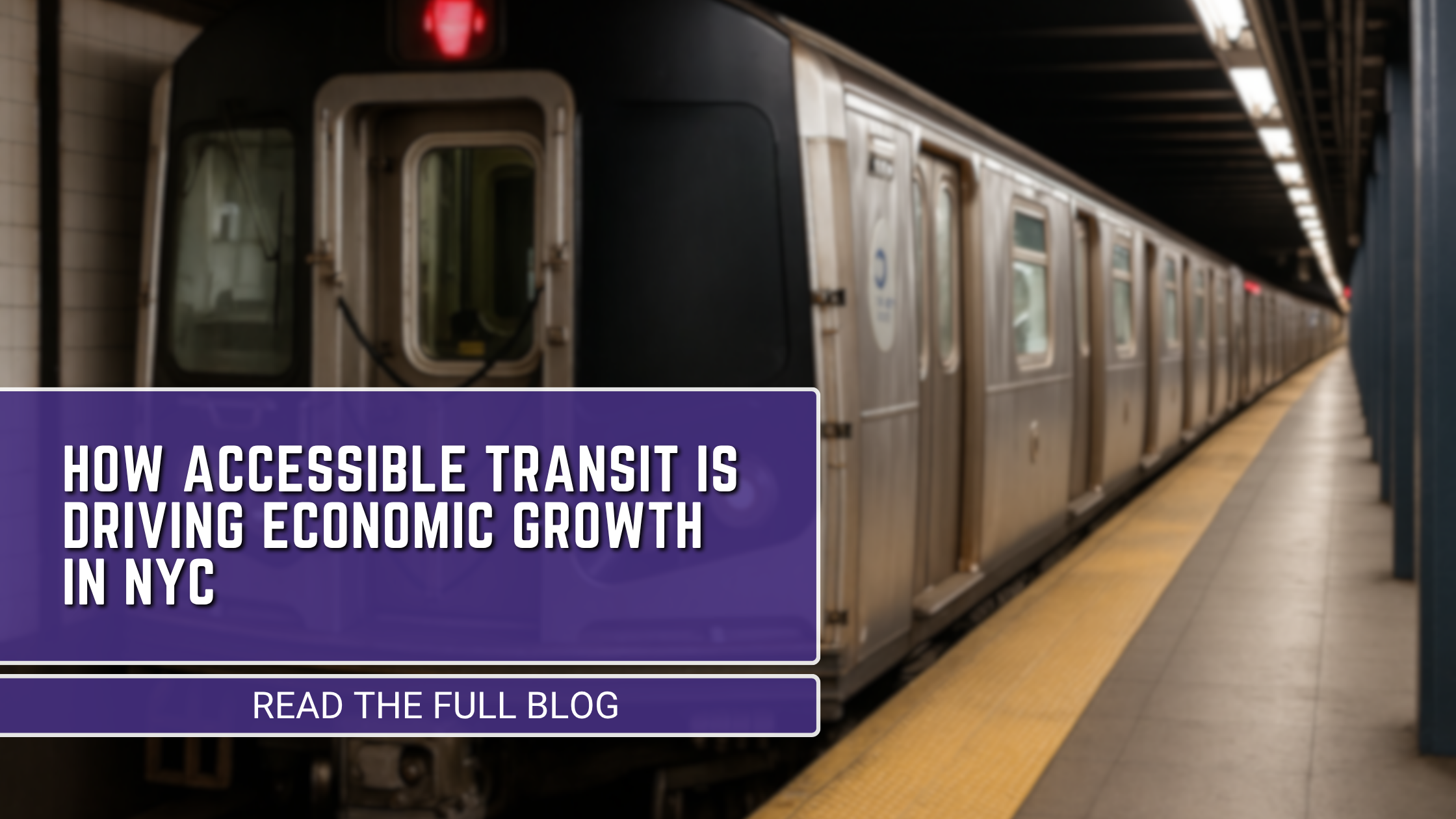How Accessible Transit is Driving Economic Growth in NYC

How Accessible Transit Is Quietly Powering NYC’s Economy
Let’s talk about something you probably see every day but might not think twice about: wheelchair ramps, elevators, wider train platforms. You know, those little features tucked into subway stations and train stops across New York City. They might seem like background noise in the hustle of everyday life, but they’re doing a lot of heavy lifting when it comes to creating economic opportunity—and they’re reshaping NYC’s future in the process.
Wait, What Does the ADA Have to Do With the Economy?
Let’s rewind to 1990. The Americans with Disabilities Act (aka the ADA) was passed, laying down the law that people with disabilities should have the same access to work, services, transportation, and community life as everyone else. It wasn’t just a nice idea—it was a game-changer.
Before the ADA, folks who relied on wheelchairs, mobility aids, or had any travel-limiting conditions had almost no consistent access to public transportation. That meant fewer job options, limited social life, and a serious uphill battle just to live day-to-day.
Now, zoom back to 2025. Those “small” accessibility features? They’re the gateway to employment, education, independence—and yes, a better economy.
NYC’s Transit System: Not Just Trains, It’s a Lifeline
New York isn’t perfect (we all know the MTA has its… moments), but it leads the pack in public transportation accessibility. Between the subway, Metro-North, and the LIRR, the city’s transit web connects millions of people—not just across boroughs, but to actual opportunity.
Think about it: if 13% of NYC’s population has some form of disability, we’re talking about over 1 million people. That’s a huge part of the workforce, consumers, students, and community members. Without accessible trains and buses? They’re effectively locked out.
And it’s not just about wheelchairs. Accessible transit also helps:
-
Parents with strollers
-
Seniors with walkers
-
Travelers with luggage
-
Anyone with temporary injuries (we see you, ankle sprainers)
The Data Backs It Up
Here’s what the stats are saying:
-
In 2022, 18.6 million Americans had difficulty traveling outside the home due to a disability.
-
In NYC, 13% of residents have a disability.
-
In 2024, 22.7% of Americans with a disability were employed—up from 17.8% in 2012.
Translation? More accessibility = more people working = stronger economy. The Urban Institute even found a direct link between proximity to transit and employment: if you’re farther from accessible transit, your chances of having a job drop. That’s not just a personal issue—it’s a citywide economic one.
The MTA’s Big ADA Push (and Why It Matters)
Modernizing subway stations isn’t exactly a walk in the park—especially when you’re working with 100-year-old infrastructure and can’t shut it down for months. Still, the MTA is pushing forward with ADA upgrades. So far, about 30% of stations are accessible, and the goal is 95% by 2055.
Sure, 2055 feels lightyears away, but progress is happening—and for those who’ve waited decades for elevators and ramps, every new upgrade is a major win.
And let’s be real: this isn’t just about feel-good inclusivity. It’s about powering a city where everyone has a shot at independence, income, and dignity.
The Bottom Line
Transit accessibility isn’t just about compliance or checklists. It’s about freedom. It’s about letting a person get to work, grab groceries, meet friends, chase dreams—all without barriers.
So the next time you see a new elevator or accessible platform, remember: that’s not just construction. That’s economic infrastructure. That’s progress.
Because a truly great city doesn’t just move people. It includes them.
Tags: NYC Transit, Accessible Subway, ADA Compliance, Economic Opportunity, Disability Rights, Urban Institute, MTA Accessibility, Inclusive Infrastructure, Public Transportation, Mobility Access
